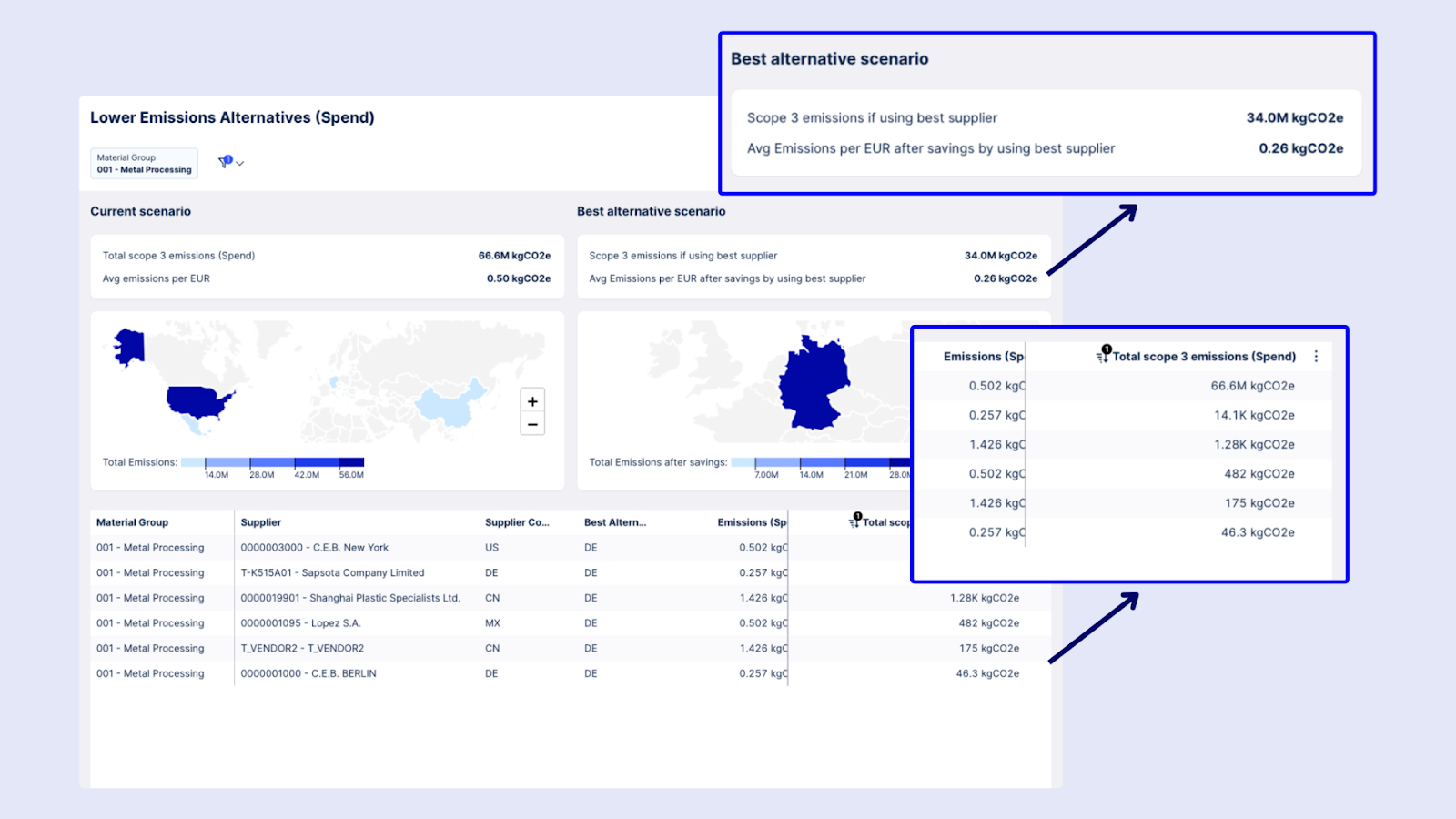


Calculating scope 3 emissions, which typically account for over 90% of an organization’s environmental footprint, is an arduous manual process requiring expert knowledge and extensive internal resources. Data generated from supply chain activities, particularly for purchased goods and services, is often messy and unstructured. The challenge lies in the diverse and fragmented data that is tracked through invoices, receipts, purchase orders, or bills of materials. Variations in units, such as weight and currency, can make emissions calculations complex, susceptible to error, and difficult to scale. There’s also often confusion about which emission factor is most appropriate for each activity.
The new Climatiq Autopilot feature leverages machine learning to automate emissions calculations for both spend- and weight-based data from purchased goods and services, while ensuring precision at scale.
By reducing the manual workload of mapping data and calculating emissions, Climatiq Autopilot makes reporting easier and decreases the risk of error. This means specific supply chain emission drivers can be revealed quickly and clearly to prioritize low-carbon options, regardless of the taxonomy or structure of your input data.

Sourcing, vetting, normalizing, and maintaining emission factors is a resource-intensive task which typically requires months of ongoing manual effort using tools like spreadsheets. The next, and arguably more complex, challenge is matching hundreds or more emission factors to countless individual line items sourced from bills of materials (BOM), invoices, and purchase orders – exponentially increasing the complexity and exposing calculations to human errors and compliance risks.
With Climatiq Autopilot, this process is almost instant. This solution is plug and play: there’s no long set-up before users can start calculating emissions, and no need to match line items or organize and maintain emission factor data. Delivered through a developer-friendly API, the Climatiq Autopilot integrates into your tools and applications, including those for supply chain management, sourcing, procurement, ERP, expense management, or supplier relations.
Pairing a proprietary natural language processing (NLP) model with carbon accounting expertise, Climatiq Autopilot analyzes large, unstructured text-based datasets to classify each specific purchased good or service, match line items to the correct emission factors, and calculate accurate emission estimates. Additionally, it provides a built-in expert review mechanism leveraging Climatiq’s in-house GHG accounting team. Its matching algorithm continually refines its precision and improves with usage.
To maintain traceability and auditability, Climatiq Autopilot also returns a complete audit trail containing the matched emission factor and source dataset used, the match confidence score, and LCA activity, among others. All outputs are compliant with the GHG Protocol and ISO 14067 requirements.
Embedding emission insights into supply chain operations transforms industries. It empowers teams to make informed decisions that align with both economic and environmental objectives.
Here are a few instances where Climatiq Autopilot can be integrated into enterprise software and decision processes to streamline carbon emission measurement and empower carbon action at scale:
Climatiq partner Celonis, a leader in business process management software, recently launched their Material Emissions App. Designed to bridge the gap between sustainability and procurement teams, the app automatically calculates the footprint of all the materials used in a given product. This reduces calculation complexity and empowers Celonis’ customers to work collaboratively and reduce scope 3 emissions.

Powered by Climatiq Autopilot, the Material Emissions App intelligently maps data from purchasing to the correct emission factors. It enables continuous analysis and tracking of scope 3.1 (Purchased Goods and Services) emissions based on materials, as well as guidance for effective reduction options.
Our partnership with Celonis is advancing crucial transparency in scope 3 emissions. By harnessing the power of AI and scientific expertise, we’re able to marry process intelligence with carbon intelligence, and bring emission visibility to every step of the business value chain.
Want to learn more about Climatiq Autopilot? Check out our API docs.
To find out how Climatiq Autopilot could streamline your scope 3 emission calculations, get in touch with a Climatiq expert.